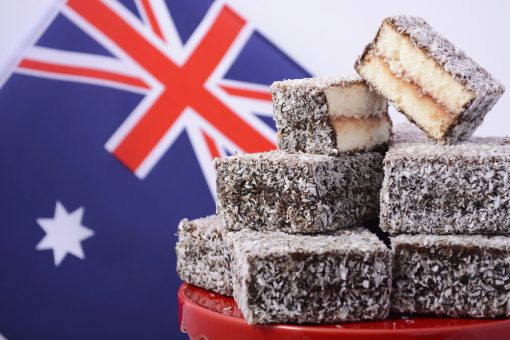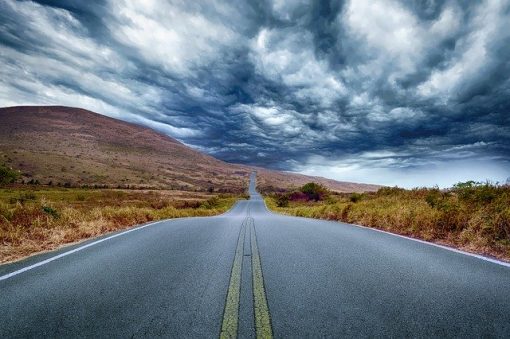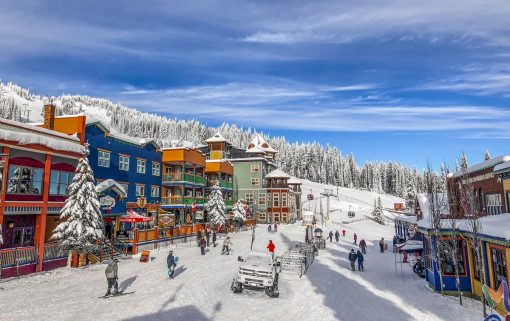
Yes, it will be a new world out there on ski slopes this 1920-21 ski season
Right now, ski resorts across North America are trying to figure out what next season will look like. And whatever finally happens, it won’t look like what you remember from the past ski seasons.
This ski season there will definitely be limited daily lift tickets available, spaced tables in restaurants, outdoor eating where practical, social distancing in lift lines, and restrictions on lifts, including gondolas. Bathrooms? Yep, lines with X’s on the floor to manage social distancing in bathroom lines.
How do we know the 2020-21 ski season will look like this?
Because this summer was a dry run for many resorts. SilverStar in Canada had cyclists waiting in long, spaced-out single lines for lifts and limited people to two strangers (or a family) on chairs and in gondolas. Patio eating was popular everywhere and larger resorts talked about repurposing banquet spaces with their larger rooms for eating inside in winter.
In the southern hemisphere, where the ski season runs during our summer, resorts were faced with questions about how to handle the winter season.
Rick Kahl, Editor of Ski Area Management magazine, said New Zealand, with early closed borders and stay at home orders, has so far successfully beaten back the virus and is nearly back to business as usual. On the other hand, there’s South America where the virus is out of control in many areas. “Almost all the areas in South America (where the season runs June – October) are closed,” he said. “Las Leñas and Valle Nevado have already announced they’re closed for the season. Portillo says it’s closed indefinitely.”
Note: The Valle Nevado website says they might open if quarantines are lifted. But so far, with the end of the season approaching, this hasn’t happened.
Australia, Kahl added, is “in the middle, with limited capacity, social distancing and all the other usual mitigation measures.”
And as an example of what North American resorts may do, Threadbo in Australia refunded all season passes because they knew they were going to be hit with 50 percent capacity limits. Their booking system was online-only, and by advance reservations. They were sold out through August 30th.
“In order to avoid having a complete revolt by their season pass holders, Threadbo gave pass holders a 40 to 70 percent discount on day tickets,” Kahl said, adding that for North America, people will need assurances they are covered and if “things go south and they do commit in advance, they won’t be stuck having put out a lot of money and have no recourse for getting it back.”
Everyone agrees the final form for North America’s winter ski season is still in flux. But Air Canada, where the height of “the season” for them is now, clamped down with restrictions immediately. Tony Celio of Air Canada detailed a very specific list:
- Touch-free check-ins, mandatory masks, hand sanitizing stations throughout the airports, health questions, and temperature checks. The highest temperature permitted to board is 99.5.
- In the boarding area, social distancing requirements are in place. There will be no lining up to board. All passengers will be required to stay seated until their group (i.e., 1, 2, 3) is called. Boarding will be from the back of the aircraft to the front, and from the window to the aisle.
- Onboard, the carrier will have complimentary packs containing hand sanitizer, wipes, mask, gloves, bottle of water, snack, and headset given to each passenger. Crews are required to wear masks and gloves. The aircraft will be sanitized between flights with hospital grade disinfectant and HEPA filters are used for the cabin air.
And in a recent ski representative virtual meeting, Cello mentioned that the airline is looking into possibly using instant Covid tests at some point.
As for many Canadian resorts, they are not expecting massive crowds since they assume their international visitor counts will be down.
Tamara Melanson of SilverStar said hotel guests have been naturally spaced out this summer because there is a mandatory 24-hour gap between check out and the next check-in so rooms can be deep cleaned. Melanson figures winter will look much like this summer on lifts with single stretched out lines to board and limits on the number of people loading. Interestingly, this is the busiest year they’ve ever had for cyclists going up the mountain.
Many other resorts agreed. Cycling, hiking, whatever – Just. Get. Out. Along the same lines, resorts expect a booming year next winter for nordic skiing.
What else is being done to protect guests for the upcomig ski season?
Andre Quenneville, general manager of Mt. Norquay added that some resorts are experimenting with spraying lifts with disinfectant.
Jen Kyles of SkiCan which represents resorts across Canada said “People will need more patience,” adding that, for instance, they will need to make prior reservations for rentals which will then have timed entries to keep guests adequately spaced. Many resorts, she said, are thinking of shifting dining into their conference facilities where the rooms are larger. And buffets will be gone.
Resorts like Mt. Norquay and Panorama Mountain Resort, not exactly known for crushing crowds, don’t expect to have problems with spacing on-slope.
Meanwhile this summer, Banff closed its main downtown corridor to provide more space for people on foot. Restaurants had 50 percent occupancy indoors but also had dining on the street.
As of late summer, the border between Canada and the US remained closed to tourists. And though there are hopes it will open before ski season, no one knows for sure.
In the US, resorts heading for record years last season had their profits cut severely as they were forced to close in Marchbefore spring break, before late spring skiing. “Prior to the industry-wide COVID shutdowns in March, we were on track for the fourth-best season ever, expecting to finish up at 59.7 million skier visits,” said Kelly Pawlak, President and CEO of the National Ski Areas Association (NSAA). “Instead, we wound up 14 percent down from the previous year. Missing the important spring break and summer business will cost the industry over $2 billion and projections for winter at limited capacity … that’s another two to three billion.”
So yes, the ski industry is hurting.
Resort people agree about the need for skiers and riders to plan ahead.
“This is not the year to roll out of bed and say, ’Hey I’m gonna go to my favorite ski area today.’ Advance online tickets may be part of our new reality. We will encourage checking the resort website not only when planning your vacation but right before you head up (for a day trip) because information changes day by day,” Pawlak said.
Patricia Campbell, president of Vail Resorts Mountain Division which has 37 mountain resorts across 15 states and two countries, added,“Everybody’s so hungry for information and we’re living in a lot of ambiguity now and that will continue.”
The typical area, one representative said, is now looking at five different plans depending on how severe the restrictions are or if they’re gone completely.
In the end, everyone agrees, the 2020-21 ski season will be a lot of trial and error.
Save to Pinterest
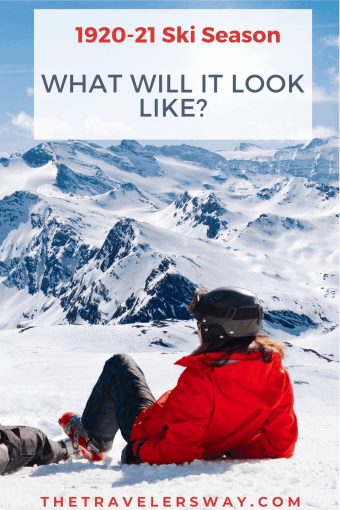
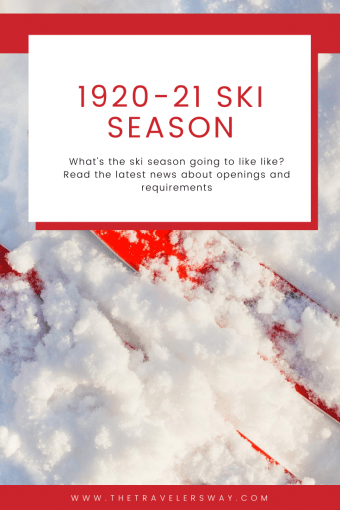
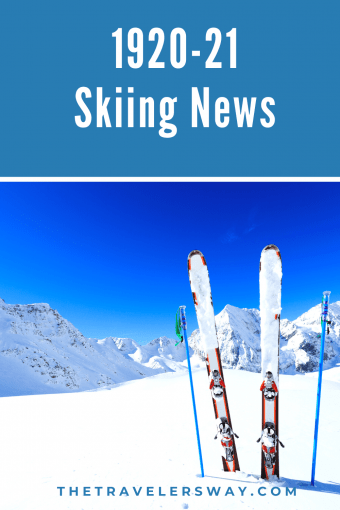
Guest author bio: Yvette Cardozo didn’t even see snow till she was 25. That’s because she grew up in snow-free, even frost-free south Miami Beach. In fact, when she saw frost for the first time at 13, she thought it was mold. She finally got into skiing at 30 and claims she probably has the most exhaustive collection of “dumb Florida gal discovers snow” stories in the world. She gave that up after her first heli-ski story. Yvette now lives in the Pacific Northwest 40 minutes from a ski slope. Learn more about Yvette on her website, follow her on Instagram (@ycardozo), and check on her photos on Alamy.
Mary Jo Manzanares is a founder and the editor-in-chief of The Traveler’s Way, an online travel magazine proving informational and inspirational travel recommendations for curious Baby Boomer travelers. She has been a speaker at various industry events and has a personal travel blog at Traveling with MJ. When she’s not traveling, Mary Jo likes lingering over a cup of coffee, wandering in a museum, sipping wine at a cafe, and sharing it all with friends and readers. Mary Jo’s top travel destinations are Italy, Portugal, and the Caribbean.

